Intel Unveils Lunar Lake Architecture: New P and E cores, Xe2-LPG Graphics, New NPU 4 Brings More AI Performance
by Gavin Bonshor on June 3, 2024 11:00 PM ESTIntel Lunar Lake: New E-Core, Skymont Takes Flight For Peak Efficiency
Intel also opts for their Skymont E-cores, which are designed more for efficiency while maintaining a solid level of performance at a lower power envelope.
The Skymont cores feature a significantly broader decode architecture, with a 9-wide decode stage that includes 50% more decode clusters than previous generations. This is supported by a larger micro-op queue, which now holds 96 entries compared to 64 in the previous Crestmont E-Cores.
Intel has improved the out-of-order execution engine by boosting the allocation width from 4 to 8 and the retire width from 8 to 16. The next-gen Skymont core is supposed to surpass Crestmont E-Cores with double the allocation and retire width in terms of its ability to commit and run out-of-order instructions, decreasing overall latency and minimizing stalling for data dependencies.
Queuing and buffering capabilities have also been improved within the Skymont E-Core. It features a deeper reorder buffer of 416 entries, up from the previous 256, while Intel claims the size of the physical register files (PRF) and INT, MEM, and Vectors have been made deeper, too.
Focusing on dispatch ports, Intel has opted for a similar approach to Crestmont. This includes 26 dispatch ports, 8 integer ALUs, 3 Jump Ports, and 3 for load operations per cycle. Regarding Vector performance, Skymont supports 4x128-bit FP and SIMD vectors, which doubles gigaflops/TOPs and reduces latency for floating-point operations.
Intel does provide some figures highlighting Skymont's power efficiency and performance when compared directly to the Low Power Island E-Cores included on the SoC tile on Meteor Lake. In this particular line chart, Intel increases single-threaded performance by 1.7X while consuming just one-third of the power relative to Meteor Lake's LP E-cores.
Looking at multi-threaded performance, Intel puts Skymont 2.9X faster at 1/3rd of the power requirements when compared to Meteor Lake and the LP E-cores. It's worth noting that the Skymont E-Core cluster on the compute tile has double the cores of the Meteor Lake LP E-Core cluster (4 vs. 2), so performance is expected to be higher overall.
Due to their low-powered nature for mobile devices such as notebooks, the Skymont E-cores are designed to be very flexible, with some leverage over previous E-Core architectures. Compared to Raptor Cove, Skymont offers 2% better integer and floating-point performance in single-threaded workloads, with a power and thermal envelope almost identical to Raptor Cove. This is in a more desktop-friendly environment, as Intel does depict the data with the Skymont cores on an LLC or a Ring Bus. This is E-Cores versus the previous gen of P-Cores, in which Intel is claiming a 2% lead.
Intel's Skymont E-cores represent the next leap in Intel's architectural development. According to Intel's disclosure, Skymont looks to be a marked improvement in multiple areas over the previous Crestmont E-Core, including decoding, execution, memory subsystems, and power efficiency. While Intel discloses them as E-Cores, the messaging surrounding Skymont is a little confusing.
The easiest way to decipher this is that they are similar to the two LP E-Cores within the Meteor Lake SoC tile, but with Lunar Lake, they are in a cluster of four built onto the compute tile. On Lunar Lake, they will be as efficient as the LP E-cores of old, but for desktop, they will be in a cluster on the chips Ring Bus, meaning they will likely be similar to the traditional E-cores we've seen before with Intel's 14th/13th/12th Gen Core families.


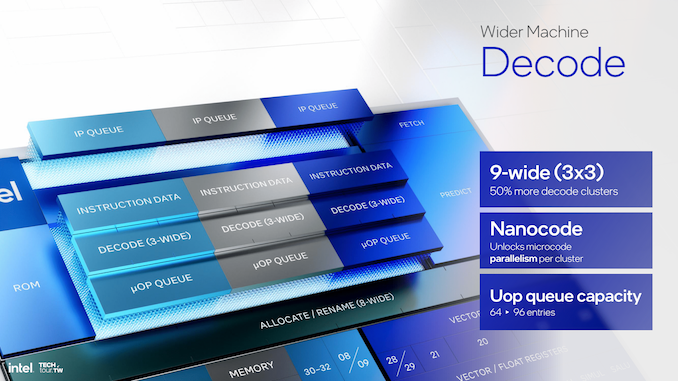
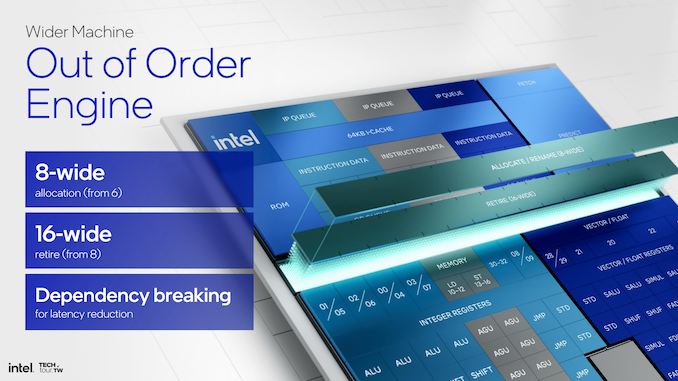
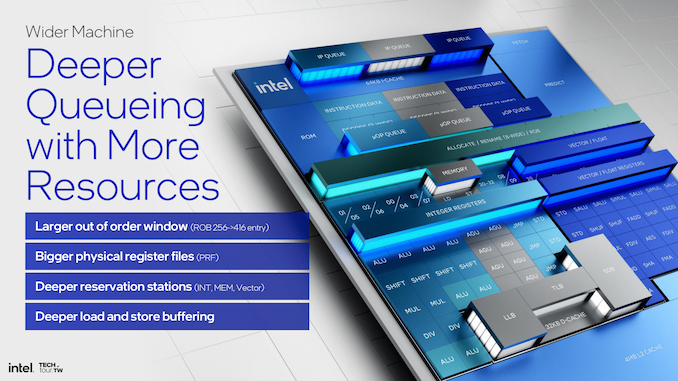


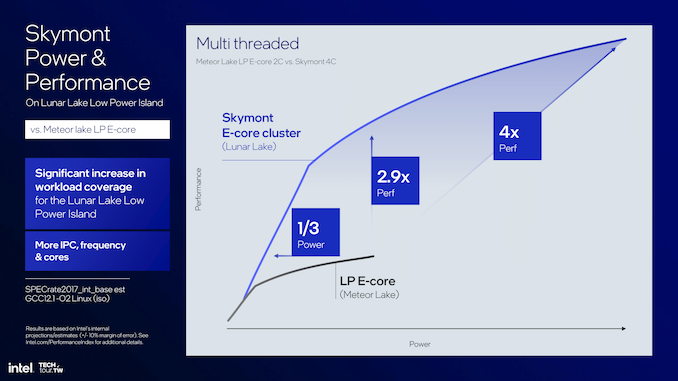
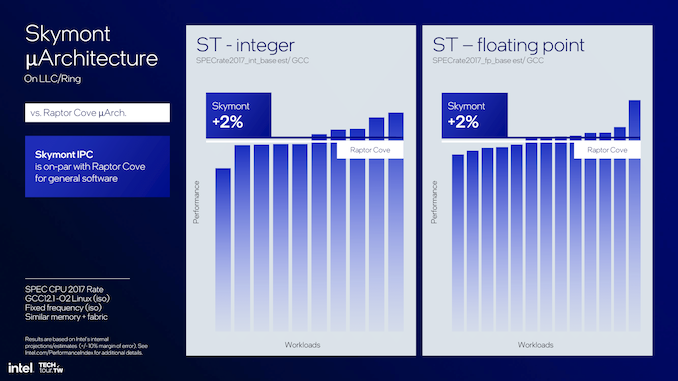
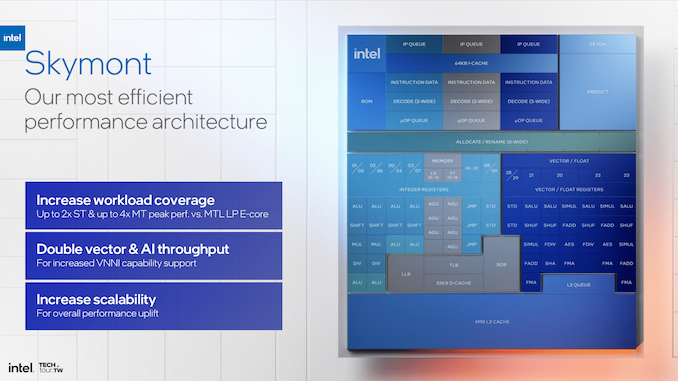








91 Comments
View All Comments
The Hardcard - Wednesday, June 5, 2024 - link
There will be Lion Cove with hyperthreading. It is designed such that it can be physically left out or included in depending on the value to each product.It was left out of Lunar Lake as the primary goal here is performance per watt and battery life superiority over Apple and Qualcomm.
Server Lion Cove will absolutely have hyperthreading. Rumors are Arrow Lake will have it as well. Reply
TMDDX - Wednesday, June 5, 2024 - link
Is on chip "AI" the new connected standby for NSA spying? Replyballsystemlord - Wednesday, June 5, 2024 - link
Shhhhh, you're not supposed to say that. It's classified. ;) Replysharath.naik - Wednesday, June 5, 2024 - link
So would this have on package memory, what is the size of memory? how many P cores how many E cores? So many questions no answers. Is this like a paper launch? Replysharath.naik - Wednesday, June 5, 2024 - link
Never mind I was wrong. 4E+4P and up to 32 GB RAM. I wish they had option for 64GB, but 32GB is a good number Replystephenbrooks - Wednesday, June 5, 2024 - link
The wider Lion Cove core looks pretty impressive, I'll be interested to see how it does in desktops. Replyname99 - Wednesday, June 5, 2024 - link
"In total, this puts 240KB of cache within 9 cycles' latency of the CPU cores"Does it? If they do things the usual Intel way the L1 is inclusive of the L0...
Other options are possible, of course, but were they implemented? Reply
mode_13h - Thursday, June 6, 2024 - link
I wonder if the tag RAM for the L0, L1D, and L2 are all separate? It would be interesting if they grouped it all together in a tree-structured lookup and put that as close as possible to the core's load/store unit. The actual data memory of the caches could be the only part that's physically separate. ReplyBruzzone - Wednesday, June 5, 2024 - link
It's worth the wait to Lunar and Arrow?Or take advantage of the Intel and AMD current generation clearance sales?
Intel is flooding the channel with Raptor desktop and mobile in the last eight weeks apparently to sustain a Core supply bridge' into Lunar and Arrow. Intel is also sucking the financial capital out of the channel in an effort to block or slow the procurement of anything other than Intel.
In parallel fighting it out for surplus control, AMD is also engaged sucking financial capital out of the channel by flooding the channel specifically with Raphael desktop.
Where Meteor Lake and AMD Phoenix, Hawks and Granite Ridge continue as intermediate 'Al' technologies into Strix mobile and Arrow desktop. Not that I care about AI functionality currently.
14th desktop channel available + 98% in the prior eight weeks
13th desktop + 24.6%
12th desktop + 33.4%
Intel desktop all up;
14th desktop available today = 24.9%
13th desktop = 37% that is 48.4% more than 14th
12th desktop = 37.9% equivalent with 13th
Specific Intel mobile;
Intel Meteor Lake mobile channel available gains + 216%. Within Meteor Lake Core SKUs are 10.3%. Among total, H performance mobile = 43.9% and U low power mobile = 56%. Meteor Lake associated are 11% of all Raptor Lake 13th mobile.
14th mobile H + 16% in week and 30% of all Meteor and 36% of all 13th Raptor mobile H.
13th mobile itself gains + 5.1%
13th H specifically gains + 8.6%
13th P clears down < 3.2%
13th U gains + 4.8%
12th Alder mobile all up + 13.2% in the prior eight weeks
12th H specifically = flat
12th P clears down < 3.2%
12th U clears down < 2.6%
I will have AMD desktop and mobile supply, trade-in and sales trend up later today at my SA comment line. Here are some immediate observations;
5900XT and 5800XT on AMD so said pricing is sufficient to push Vermeer channel holdings down in price at so said $359 and $249 now pulled by AMD in the moment. The channel might not have been happy with that regulating price move on how much R5K there is too clear from the channel. R5K channel available is up + 68% since March 9 when R5K was 68% of all R7K and today 98% of R7K available.
R7K desktop since March 9 channel supply volume available + 18%. R9K will minimally dribble out allowing R7K and R5K to clear? R9K might have to be priced up on specific SKUs to accomplish the same dribbling out objective allowing AMD back generation to clear?
Notably 3600 gains in the channel + 94% in the prior month.
3600X came back to secondary resale + 35%.
3700X is up + 15.8% that's all trade-in.
AMD might have to adjust R9K desktop top SKU and R5K desktop regulating SKUs not to interfere with the channel's ability to liquidate especially Vermeer from channel inventory holdings plus R7K SKUs that will follow in a first in first out channel sales system.
In summary, there is plenty of Intel and AMD product in the channel. The PC market remains in a downward deflationary price spiral until at least q1 2025 aimed to clear existing inventories for channel financial reclaim to buy next generation.
Subsequently there's this inventory bridge to traverse to Intel and AMD next generation products and through the summer into q4 it's never been a better time to buy a PC. I don't think desktop and mobile prices will be as low as they are heading into year end and for a long time following.
For Intel at least flooding the channel with product indicates Intel is buying time.
mb Reply
BushLin - Wednesday, June 5, 2024 - link
Thanks for the uncited nonsense Mike, we were all on tenterhooks. Reply